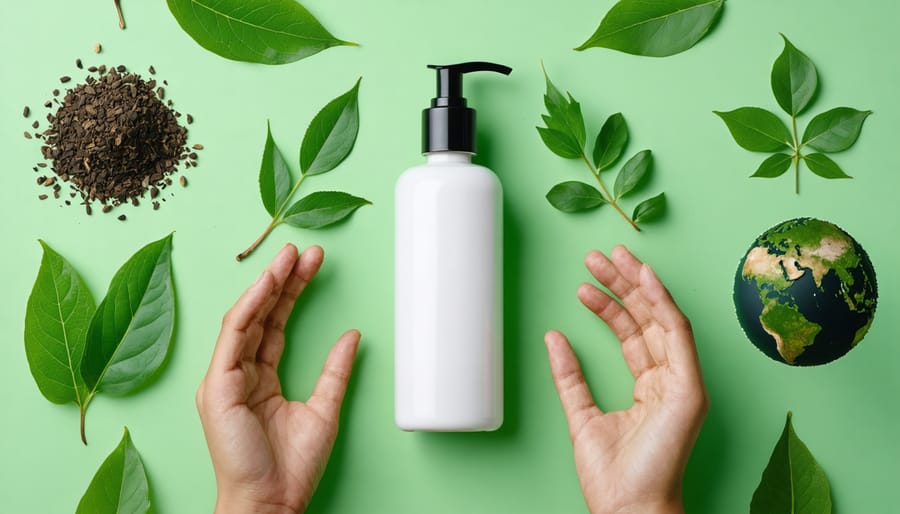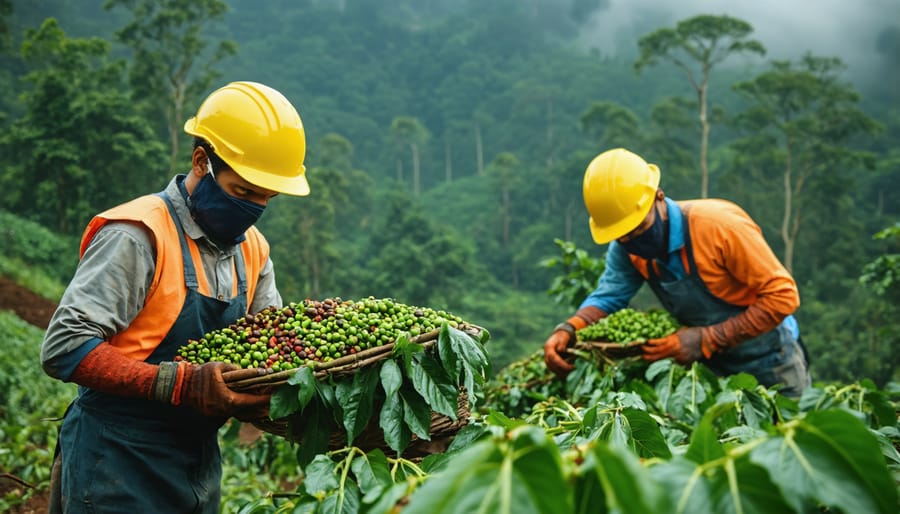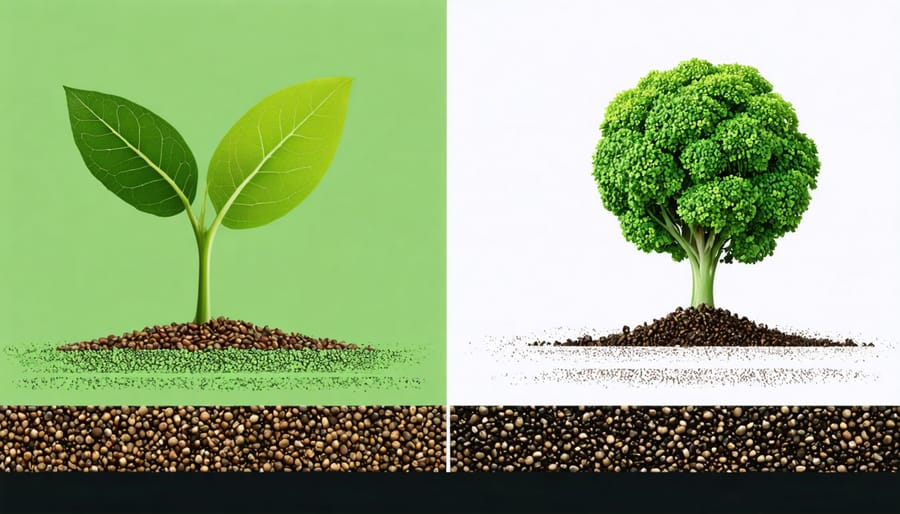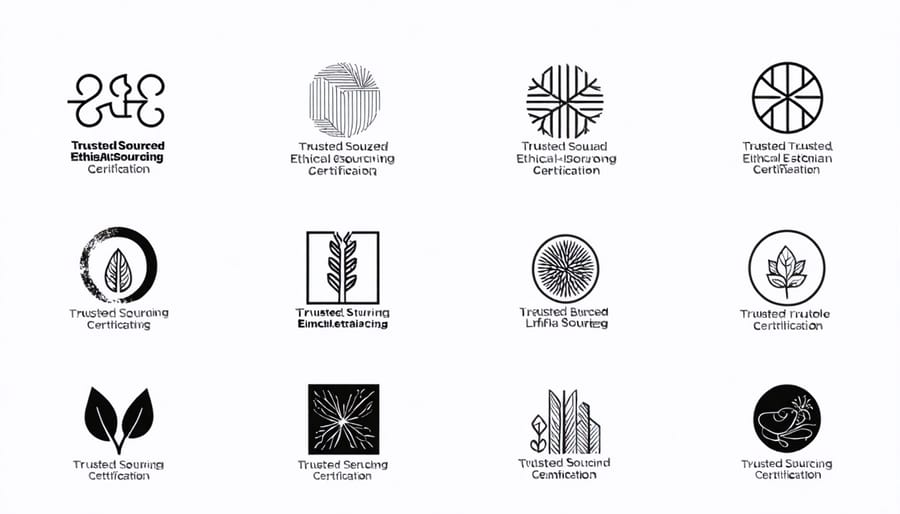
In a world increasingly focused on conscious consumption, “ethically sourced” has become more than just a buzzword—it’s a powerful movement reshaping how we think about our purchasing decisions. At its core, ethical sourcing means products are created and distributed with respect for human rights, environmental sustainability, and fair labor practices throughout the entire supply chain. From the farmer cultivating coffee beans in Colombia to the artisan weaving textiles in India, ethical sourcing ensures everyone involved in creating a product receives fair compensation and works under safe, dignified conditions.
When we choose ethically sourced products, we’re not just buying items—we’re investing in a better future. Think of it as a ripple effect: each purchase decision we make has the power to influence business practices, support sustainable communities, and protect our planet’s resources. Whether you’re sipping your morning coffee or selecting a new wardrobe piece, understanding ethical sourcing empowers you to make choices that align with your values while creating positive change in the world.
What Makes an Ingredient Truly Ethically Sourced?
Fair Labor Practices
At the heart of ethical sourcing lies a commitment to fair labor practices that protect and empower workers throughout the supply chain. Just as we’ve seen the positive impact on coffee farmers, ethical labor practices extend across various industries, ensuring workers receive fair compensation for their efforts.
Fair wages are a cornerstone of ethical sourcing, meaning workers earn enough to support themselves and their families comfortably. This goes beyond minimum wage requirements to provide living wages that reflect local cost of living and economic conditions. For example, when I switched to buying ethically sourced clothing, I learned that many brands now ensure their garment workers earn up to 30% above local average wages.
Safe working conditions are equally crucial. This includes proper safety equipment, reasonable working hours, and clean facilities. Workers should have access to clean water, adequate breaks, and protection from hazardous materials. Additionally, ethical sourcing prohibits child labor and forced labor, while supporting workers’ rights to organize and advocate for themselves.
Remember, when we support companies committed to fair labor practices, we’re not just buying products – we’re investing in human dignity and sustainable communities.

Environmental Sustainability
When we talk about ethical sourcing, environmental sustainability plays a crucial role in the bigger picture. I’ve learned through my own journey that truly ethical products don’t just consider human welfare – they’re also kind to our planet. Sustainable farming practices are at the heart of this approach, incorporating methods like crop rotation, water conservation, and minimal chemical use.
One of the most impactful ways producers maintain environmental responsibility is through seasonal sourcing practices, which naturally reduce the need for artificial growing conditions and excessive transportation. This approach not only preserves soil health but also significantly reduces carbon emissions.
Many ethically sourced products come from farms and facilities that prioritize renewable energy, waste reduction, and biodiversity protection. I’m always amazed by producers who go the extra mile – creating wildlife corridors, implementing water recycling systems, and using eco-friendly packaging. These practices ensure that while we’re taking care of our communities, we’re also preserving our environment for future generations.
Remember, when you choose ethically sourced products, you’re supporting a whole ecosystem of sustainable practices that protect our planet while providing the goods we love and need.

Fair Trade vs. Ethical Sourcing: Understanding the Difference
While both fair trade and ethical sourcing share the common goal of promoting responsible business practices, they’re not quite the same thing. Think of ethical sourcing as the broader umbrella that covers various aspects of responsible production, including environmental impact, worker conditions, and sustainable practices. Fair trade, on the other hand, is a specific certification system that focuses primarily on ensuring fair wages and better working conditions for producers in developing countries.
I remember chatting with a friend who was confused about why some fair trade beauty products cost more than regular ones. The truth is, fair trade certification requires companies to meet strict standards and pay premium prices to producers, which helps support community development and sustainable practices.
What makes ethical sourcing different is its more comprehensive approach. While fair trade certification focuses mainly on labor conditions and fair compensation, ethical sourcing considers additional factors like environmental conservation, animal welfare, and local community impact. For example, an ethically sourced product might not be fair trade certified, but could still meet high standards for sustainability and responsible production.
Think of it this way: if fair trade is like following a specific recipe with exact measurements, ethical sourcing is more like creating a dish using general cooking principles – there’s more flexibility in the approach, but the end goal of doing good remains the same. Both practices are valuable and often work together to create positive change in the global marketplace.
How to Identify Genuinely Ethically Sourced Products
Certification Labels to Trust
When I’m shopping for ethically sourced products, I always look for trusted certification labels that help verify a company’s claims. Fair Trade Certified is one of the most recognized and reliable labels, ensuring fair wages and safe working conditions for workers. The Rainforest Alliance certification focuses on environmental sustainability and worker welfare, particularly in agriculture and forestry.
For jewelry and precious stones, the Kimberley Process Certification ensures diamonds are conflict-free, while Fairmined certification guarantees responsible mining practices. If you’re shopping for coffee or chocolate, look for both Fair Trade and UTZ certifications – they work together to verify sustainable farming practices and fair worker treatment.
B Corp certification is another gold standard, indicating a company meets high standards of social and environmental performance. For fashion, the Global Organic Textile Standard (GOTS) ensures organic materials and ethical labor practices throughout the supply chain.
Remember, while these certifications aren’t perfect, they provide valuable third-party verification of ethical practices and can help guide your conscious shopping decisions.

Red Flags to Watch For
While shopping for ethically sourced products, I’ve learned to spot several warning signs that might indicate misleading claims. Watch out for vague terms like “eco-friendly” or “natural” without specific certifications or explanations to back them up. If a product seems suspiciously cheap compared to similar ethically sourced items, that’s often a red flag – true ethical sourcing typically involves fair wages and better working conditions, which can increase production costs.
Be wary of companies that make broad ethical claims but lack transparency about their supply chain. If you can’t easily find information about where and how products are made, or who makes them, that’s cause for concern. Similarly, watch for businesses that highlight one ethical aspect while ignoring others – for example, focusing solely on environmental impact while being silent about labor conditions.
Greenwashing often appears in the form of nature-themed packaging or eco-looking logos that aren’t actually tied to legitimate certifications. Remember, genuine ethical sourcing involves multiple aspects: fair labor practices, environmental responsibility, and sustainable production methods. If a company’s claims seem too good to be true or oversimplified, they probably are.
Making Ethical Choices in Your Daily Life
Making ethical choices doesn’t have to be overwhelming – small changes in your daily routine can make a big difference. Start by examining your current beauty and cooking essentials. When it’s time to replace your moisturizer or shampoo, look for brands that clearly state their ethical sourcing practices and carry relevant certifications like Leaping Bunny or Fair Trade.
In your kitchen, begin with one or two staples. Coffee and chocolate are great starting points since many brands now offer transparent sourcing information. Pay attention to labels and don’t hesitate to reach out to companies directly – many are proud to share their ethical practices with conscious consumers.
Create a simple checklist for your shopping trips: look for fair trade certifications, research brands beforehand, and consider local alternatives when possible. Remember, you don’t need to overhaul everything at once. I started my ethical sourcing journey by simply switching to fair trade coffee, and gradually expanded from there.
Join local community groups or online forums where you can share recommendations and experiences with like-minded individuals. These communities often share deals on ethically sourced products and can help you discover new brands that align with your values.
Keep track of your favorite ethical brands in your phone’s notes app, making it easier to stick to your choices during future shopping trips. Remember, every mindful purchase contributes to a more sustainable and ethical marketplace.
Making ethical purchasing decisions isn’t just a trend – it’s a powerful way to create positive change in the world through our everyday choices. By understanding what ethically sourced means and actively seeking out products that meet these standards, we’re supporting businesses that prioritize fair labor practices, environmental sustainability, and community wellbeing.
Remember, becoming a more conscious consumer is a journey, not a destination. Start small by researching the brands you regularly buy from and gradually make switches to more ethical alternatives when possible. Every purchase decision, no matter how small, has the potential to impact someone’s life or our environment.
As you continue exploring ethical sourcing, stay curious and keep learning. Connect with like-minded individuals in your community, share recommendations, and celebrate the positive changes you’re making. Together, we can create a more sustainable and equitable future – one mindful purchase at a time.
Let’s make ethical sourcing more than just a definition – let’s make it a way of life that reflects our values and supports the kind of world we want to create.



